In the figure shown when the massless spring is in relaxed state, its free end is at point B. A very small block is pressed against the spring by a distance δ and then released from rest. Except the portion BC where coefficient of kinetic is μ, track is smooth everywhere. Determine the spring compression δ so that the block enters a small hole at E. Consider all value shown in the figure.If δ is given by δ=x[mgd(5+μ)2K]12, find x. Block never leaves contact with surface
![In the figure shown when the massless spring is in relaxed state, its free end is at point B. A very small block is pressed against the spring by a distance delta and then released from rest. Except the portion BC where coefficient of kinetic is mu, track is smooth everywhere. Determine the spring compression delta so that the block enters a small hole at E. Consider all value shown in the figure.If delta is given by delta=x[(mgd(5+mu))/(2K)]^((1)/(2)), find x. Block never leaves contact with surface](https://d10lpgp6xz60nq.cloudfront.net/physics_images/VBA_RT_8_E01_459_Q01.png)
The correct Answer is:9
Mg is parallel to centre line and normal reaction passes through it so Torque about centre line is zero. So angular momentum is conserved about centre line.
mv0r0=m(vcosθ)r
vcosθ=v0r0r=v0r0√r20−h2=v0√2
Energy conservation
12mv2=12mv20+mgh
v2=v20+2gh
=(10)2+2(10)(15)=400
V=20
cosθ=10√220=1√2
Topper's Solved these Questions
Similar Questions
In the figure shown when the massless spring is in released state its free end is at point B. A very small block is ressed against the spring by a distance δ and the released from rest. Except the portion BC where coefficient of kinetic friction is μk, track is smooth everywhere. Determine the spring compression δ so that the block enters a small hole at E. Consider all values shown in the figure.
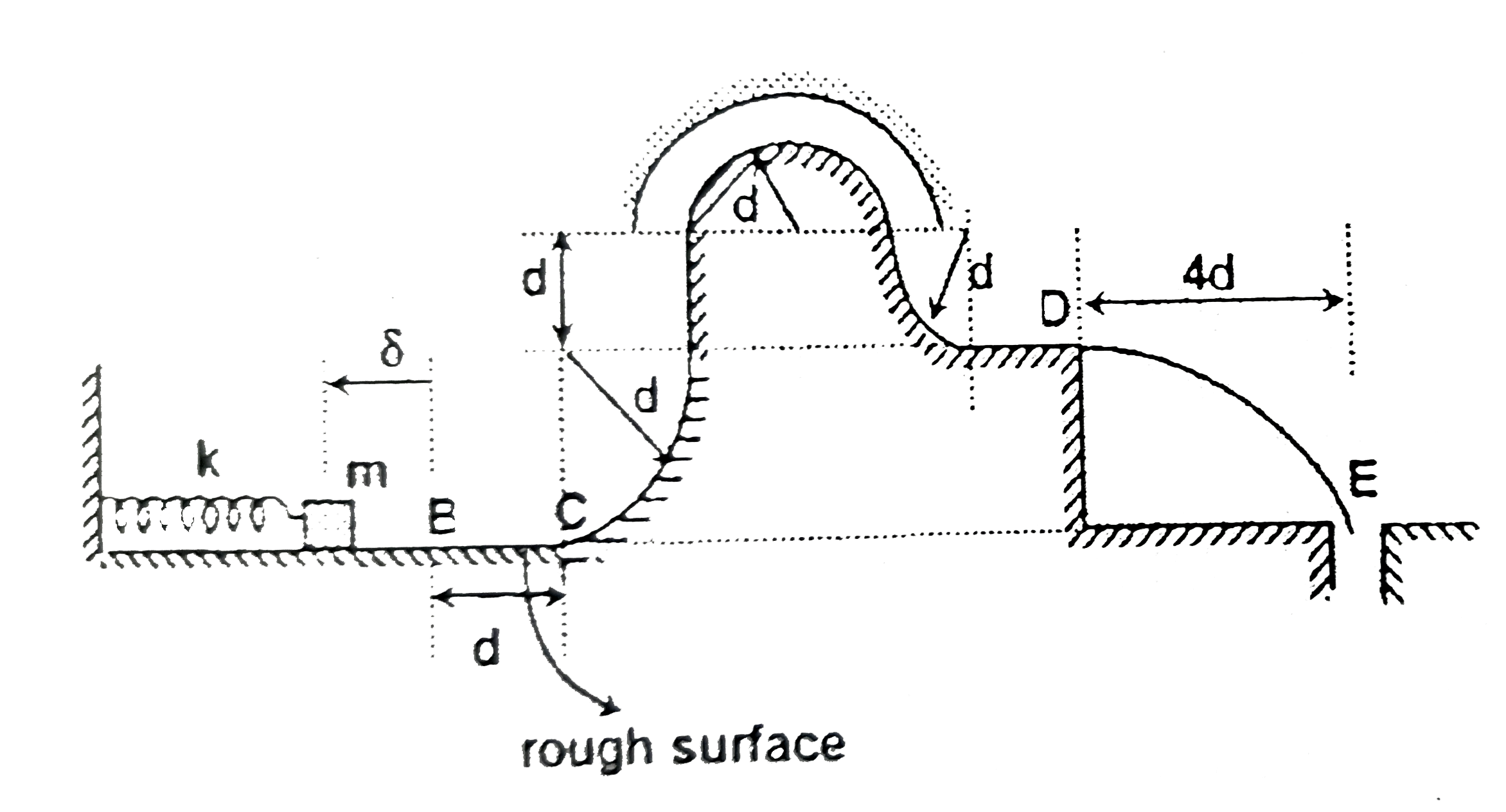
View SolutionIn the figure shown when the massless spring is in released state its free end is at point B. A very small block is ressed against the spring by a distance δ and the released from rest. Except the portion BC where coefficient of kinetic friction is μk, track is smooth everywhere. Determine the spring compression δ so that the block enters a small hole at E. Consider all values shown in the figure.

View Solution
Knowledge Check
The spring is compressed by a distance a and released. The block again comes to rest when the spring is elongated by a distance b. During this
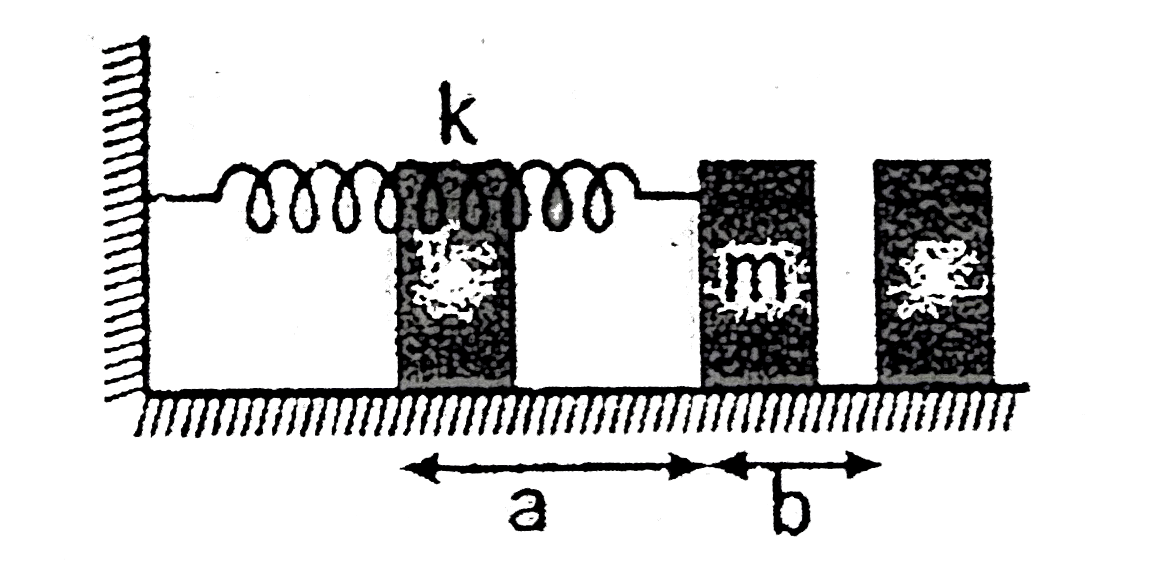 Awork done by sprinn on the block =12k(a+b)2Bwork done by sprinn on the block =12k(a2−b2)Cco-eff. of frication =k(a−b)2mgDco-eff. of frication =k(a+b)2mg
Awork done by sprinn on the block =12k(a+b)2Bwork done by sprinn on the block =12k(a2−b2)Cco-eff. of frication =k(a−b)2mgDco-eff. of frication =k(a+b)2mgIn the figure shown a block of masss m is atteched at ends of two spring The other ends of the spring are fixed The mass m is released in the vertical plane when the spring are released The velocity of the block is maximum when
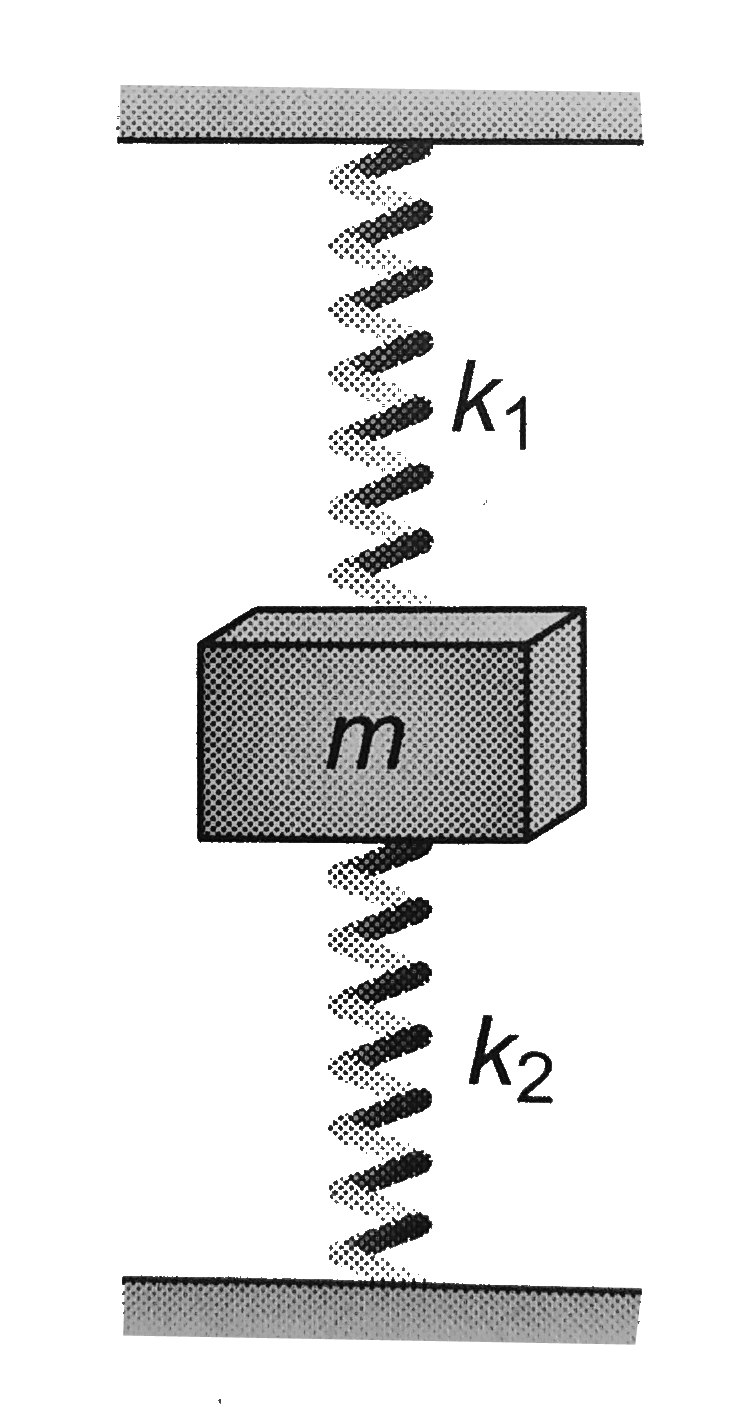 Ak1 is compressed and k2 is elongatedBk1 is elongated and k2 is compressedCk1 and k2 both are compressedDk1 and k2 both are elongated.
Ak1 is compressed and k2 is elongatedBk1 is elongated and k2 is compressedCk1 and k2 both are compressedDk1 and k2 both are elongated.A vertical spring is fixed to one of its end and a massless plank pland fitted to other end, A block is released from a height (h) as shown, spring is in relaxed position then choose the correct statement.
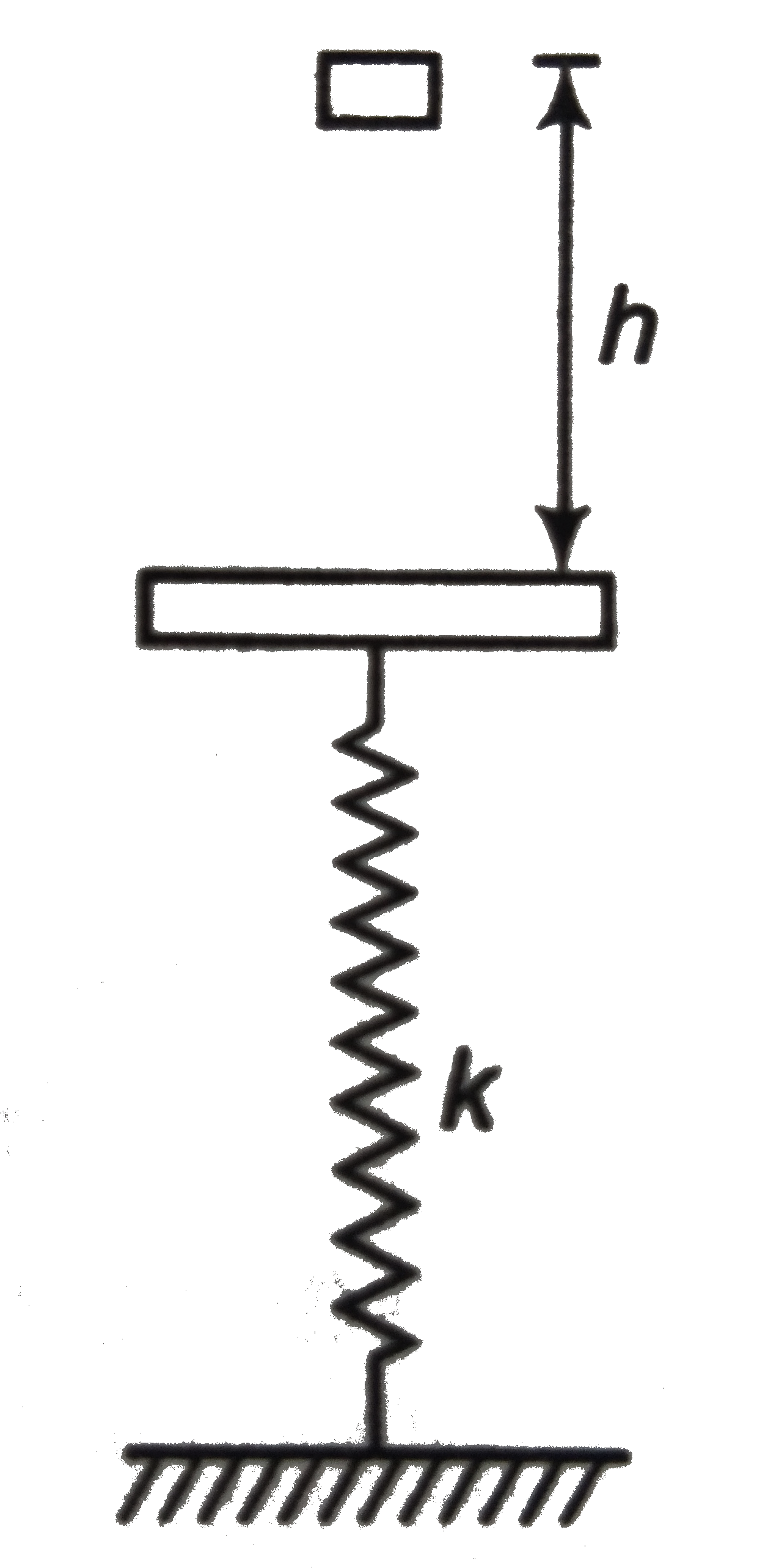 .AThe maximum compression of the spring does not depend on h.BThe maximum kinetic energy of the block does not depend on h.Cthe compression of the spring at maximum (KE) of the block does not depend on h.DThe maximum compression of the spring does not depend on k.
.AThe maximum compression of the spring does not depend on h.BThe maximum kinetic energy of the block does not depend on h.Cthe compression of the spring at maximum (KE) of the block does not depend on h.DThe maximum compression of the spring does not depend on k.
The spring is compressed by a distance a and released. The block again comes to rest when the spring is elongated by a distance b. During this

View SolutionA vertical spring is fixed to one of its end and a massless plank pland fitted to other end, A block is released from a height (h) as shown, spring is in relaxed position then choose the correct statement.
 .
.
View SolutionFigure shows a smooth track, a part of which is a circle of radius r. A block of mass m is pushed against a spring of spring constant k fixed at the left end and is then released. Find the initial compression of the spring so that the block presses the track with a force mg when it reaches the point P, where the radius of the track is horizontal.
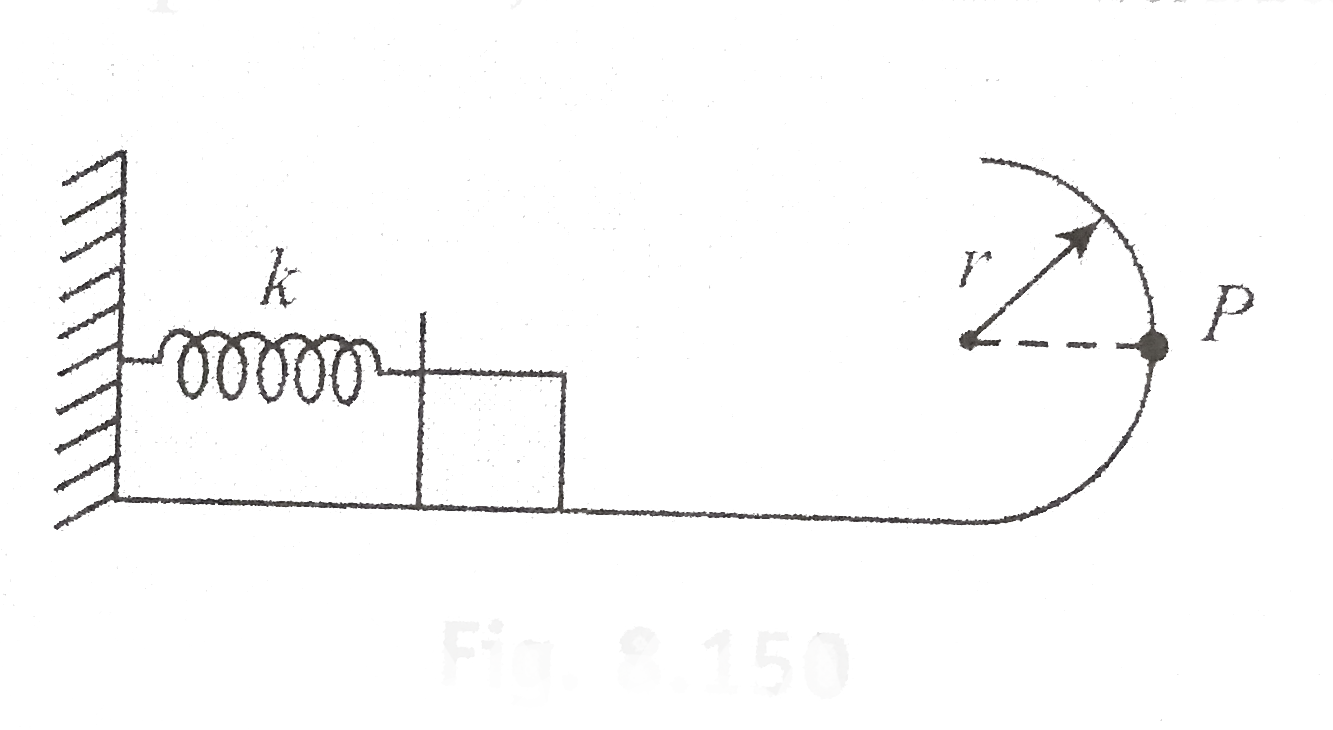
View SolutionFigure shows a smooth track, a part of which is a circle of radius r. A block of mass m is pushed against a spring of spring constant k fixed at the left end and is then released. Find the initial compression of the spring so that the block presses the track with a force mg when it reaches the point P, where the radius of the track is horizontal.

View SolutionA block with mass 0.50kg is forced against a horizontal spring of negligible mass , compressing the spring a distance of 0.20m (figure). When released, the block moves on a horizontal table top for 1.00N/m. What is the coefficient of kinetic friction μk, between the block and the block and the table?

View Solution
